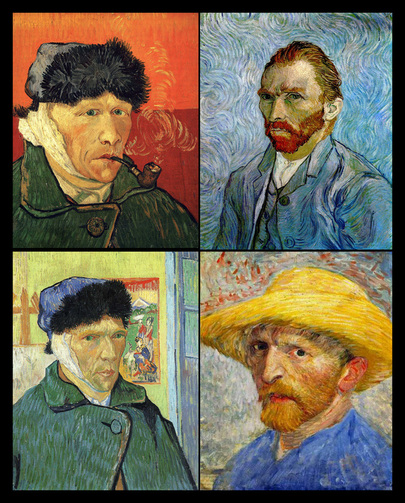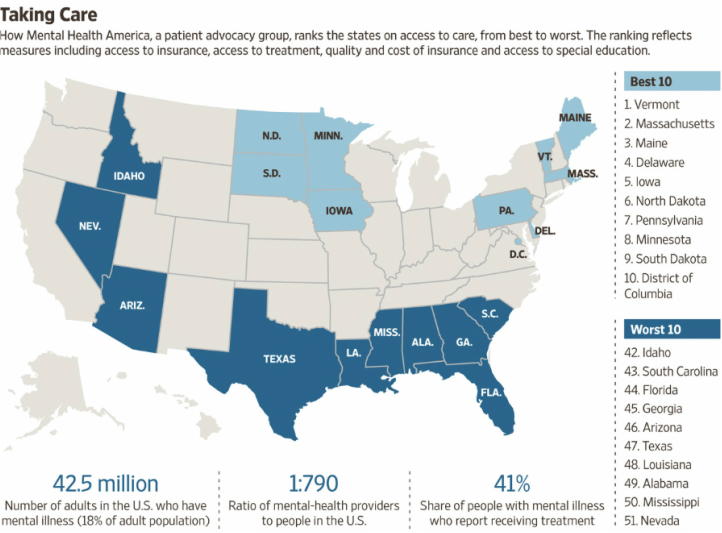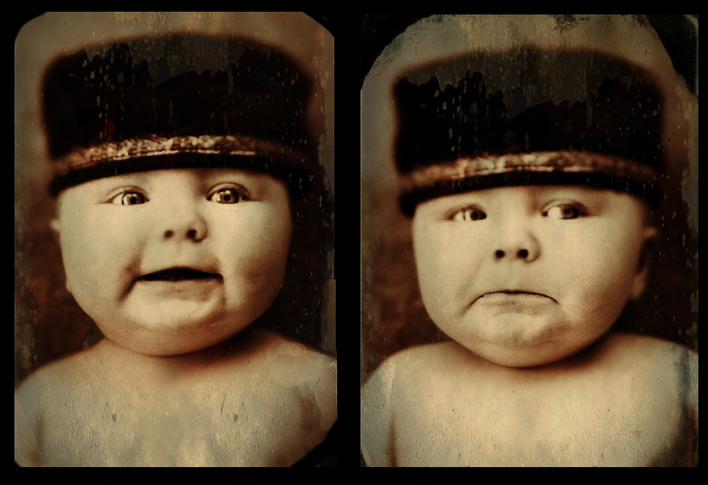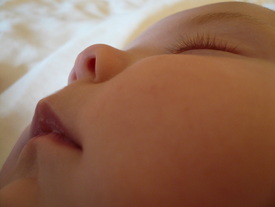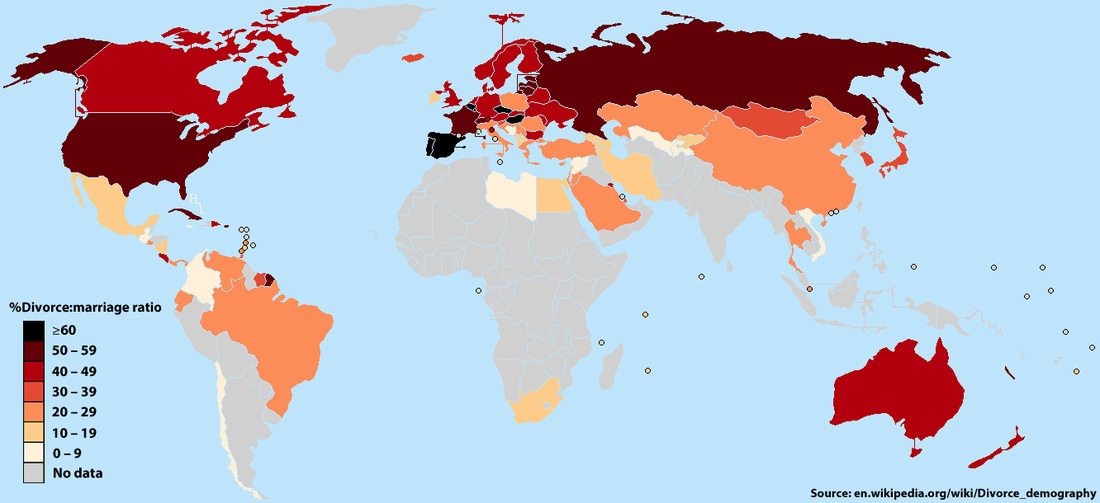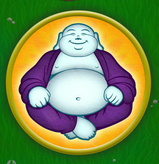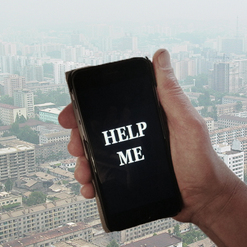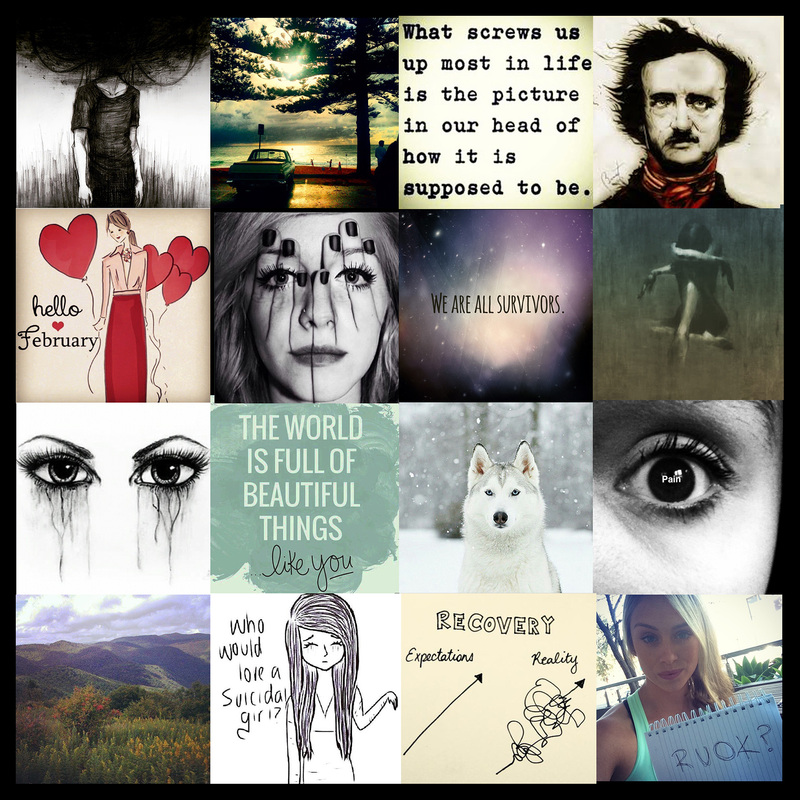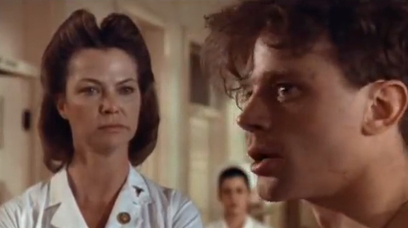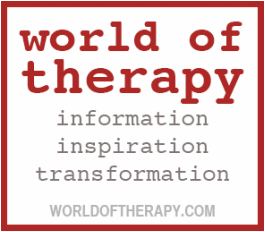 Reese Witherspoon as a bereaved woman who conquers the wilderness and her wildness within, too.
Reese Witherspoon as a bereaved woman who conquers the wilderness and her wildness within, too. This week’s Academy Awards highlighted the lack of diversity in the film industry, but mental health is being portrayed rather well says Harold S. Koplewicz, founder and president of The Child Mind Institute. He writes in The Hollywood Reporter:
This year, Hollywood made major strides in recognizing the importance of mental health through the accurate portrayal of psychiatric disorders in film. Reese Witherspoon gave a riveting performance in Wild as a woman healing from the emotional trauma of losing her mother by walking the Pacific Coast Trail and reconnecting with herself. Whiplash showed the stress that's an inevitable part of striving to be the best, and the strong impact teachers can have on their students — for better or worse. In The Imitation Game, Benedict Cumberbatch portrayed genius code breaker Alan Turing in a way that showed just how isolating genius can be. Meanwhile, The Theory of Everything depicted not only how ALS has affected Stephen Hawking, but also the emotional burden on his wife and family. For many, movies are the first vehicle through which they see and begin to understand mental health issues, which is why it is so important that these films reflect reality.
• Meanwhile, the Oscars acceptance speeches were filled with political activism, as usual, the best being from Graham Moore, who was presented with the Academy Award for Best Adapted Screenplay by Oprah Winfrey, then divulged he’d attempted suicide at 16 because “I felt weird and I felt different and I felt like I did not belong” (you can watch Moore’s speech here). For his speech and his “stay weird” message to outsiders everywhere, Moore received a standing ovation. From ABC News:
Graham Moore, who won the Oscar for best adapted screenplay for “The Imitation Game,” said in his acceptance speech that he had tried to kill himself as a teenager.
“When I was 16, I tried to kill myself because I felt weird and I felt different and I felt like I did not belong,” he said. “I would like this moment to be for the kid out there who feels like she's weird and different and feels like she doesn't belong. ... Yes, you do.”
Backstage, Moore said he saw the public moment as a rare opportunity for a writer and figured that “I might as well use it to say something meaningful.”
Earlier in the ceremony, Dana Perry mentioned that her son had killed himself. Perry made her comments in accepting the Oscar for best documentary for “Crisis Hotline: Veterans Press 1.”
“We should talk about suicide out loud,” she said.
• More Hollywood chatter: Oh no! Just when you thought the global news couldn’t get any worse, OK! Magazine reports that less than a year into their marriage, a generic American celebrity and her American footballer husband are having problems: Jessica Simpson and Eric Johnson attending marriage counselling. This comes on the heels of couples counselling too for famous-for-being-famous Khloe Kardashian and Lamar Odom, and Black Eyed Pea Fergie and Josh Duhamel. And someone called Kandi Burruss, who apparently appears on something called “Real Housewives,” apparently wants marriage counselling, too. Do we detect a trend; a new celebrity fad? Out with the macrobiotic diet and Scientology, in with couples counselling?
U.K. news
Mental health deaths in detention ‘avoidable’
From BBC News:
The deaths of hundreds of people with mental health conditions who were held in detention could have been avoided, an inquiry in England and Wales found.
It focused on adults detained on psychiatric wards, in police cells and prisons between 2010-13.
The Equality and Human Rights Commission said a host of problems including basic errors and a failure to involve families were to blame.
Officials are calling for the NHS to work towards a "zero suicide" approach.
The wide-ranging report looked at people detained for a variety of reasons - for example patients admitted to hospital when their own was safety was considered to be at stake.
It included those detained in police cells and looked at people in prisons with mental health conditions too.
Between 2010-13 the analysis shows 367 adults with mental health issues died of "non-natural" causes while detained on psychiatric wards and police cells.
Putting UK mental health services on the road to recovery
From the RAND Corporation:
Patients in the UK with a diagnosis of cancer and certain other physical conditions can expect to be given access to a range of services within specific waiting times, whereas patients with a mental health condition can find themselves in a long queue for limited treatment options. Before throwing money at the problem, UK Government departments would do well to look at how they can work together to implement evidence-based and cost-effective interventions for mental ill-health.
The disparity in the treatment of physical and mental ill-health in the UK was highlighted by a recent report from the British Association of Counselling and Psychotherapy (BACP). The Government recognises the problem. The Health and Social Care Act of 2012 put a commitment in place to provide parity of esteem for physical and mental health. In 2014, new waiting times standards were announced for patients accessing therapy through the Improving Access to Psychological Therapies programme.
Nonetheless, mental health patients often have poor access to services, little choice in the services that they receive, and endure long waiting times in their hour of need. The BACP report highlights that mental illness is the UK's most common “disease,” yet only 24 percent of people with a common mental health condition receive treatment. This leaves millions of people to suffer, with knock-on effects to society more widely.
Mental health and learning disabilities statistics: monthly report
From Gov.UK:
At the end of November 2014:
• 964,627 people were in contact with mental health or learning disabilities services. Of these, 923,938 people were in contact with mental health services and 52,336 people were in contact with learning disabilities services. These two figures combined are higher than the total, as a person may be in contact with both services.
• 23,849 people were inpatients in hospital (2.5%). 1,866 people were in hospital on wards for people with learning disabilities. The remaining 21,983 people were in hospital on wards for people with mental health needs.
• 16,864 people were subject to the Mental Health Act 1983 and of these 12,466 were detained in hospital (73.9%) and 4,259 were subject to a Community Treatment Order (25.3%).
• 59.3% of people aged 18-69, who were being treated under the Care Programme Approach, were recorded as being in settled accommodation, while 6.8% were recorded as being employed.
During November 2014
• 69,924 new spells of care began.
• There were 9,983 new admissions to hospital.
• Of those who were discharged from hospital during the month, 74.5% received a follow up within 7 days from the same provider. This is an important suicide prevention measure.
Between the start of April 2014 and the end of November 2014
• 1,560,812 people have had contact with secondary mental health and learning disability services and of these 80,281 (5.1%) had spent at least one night as an inpatient in hospital.
Key findings from the special feature on the use of restraint include:
• 105,270 people spent time in hospital in 2013/14 and of these 6,022 (5.7%) were subject to at least one incident of restraint during the year; 57.4 % of these people were men and 42.5% were women.
• These inpatients experienced a total of 23,094 incidents of restraint in 2013/14. Most people who were restrained were restrained once during the year but 960 people were restrained five or more times during this period.
• 1,618 people aged 20-29 were restrained (26.9% of the total number restrained) with 7,285 separate incidents of restraint recorded for this group.
• The ethnic group with the highest proportion of inpatients experiencing restraint per 1,000 inpatients was the Mixed ethnic group having 101 incidents of restraint per 1,000 inpatients.
Computers to replace counsellors?
The NHS is funding an initiative that could further improve access to psychological therapies, eliminate waiting lists, and do away with unnecessary burdens such as consulting rooms, salaries, staff: Get computers to provide counselling instead of people! Report from the University of Roehampton:
Professor Mick Cooper, one of the UK’s foremost academics in psychology and counselling research, has been appointed by software company ProReal Ltd to evaluate the use of the of its software with young people. The company has been awarded Phase two funding of £970,000 by NHS England’s Small Business Research Initiative Healthcare.
ProReal has developed an immersive, avatar-based virtual world software platform which helps users put thoughts and feelings into pictures. ProReal enables clients to create a visual representation of their world, and uses cameras to enable this world to be experienced from multiple perspectives. Using avatars (digital representations of people) and other features, the user can gain new insights which build stronger relationships and improve psychological well-being.
Professor Cooper leads the Centre for Research in Social and Psychological Transformation (CREST) within the Department of Psychology at the London-based university. CREST specialises in the evaluation of counselling and psychotherapy in schools and with young people.
He said: “Helping young people affected by mental health issues to explore their difficulties through an avatar-based programme could be a leap forward in understanding their actions, and a worthwhile tool for counsellors to improve the quality of support we give them.
“It would bring therapeutic support to young people via the online world, where many will be comfortable and experienced in communicating with others. This is a potentially very welcome development, but we must be sure it will work, which is why the evaluation we carry out will be key to developing the product. As professionals, we can’t afford to try new methods of support until we’re absolutely confident they are as good as they can be and will genuinely make a difference.”
World news
Australia: New app to prevent suicides among youth
From International Business Times UK:
A mobile phone app i–bobbly designed by Australian developers to help youth at risk of suicide is making a difference after a trial, say its makers.
The self-help tool targeting a generation constantly on their phones or iPads and shut off from speaking to people gets them to talk through a series of questions.
The replies provide insight into their mental well-being.
Going through each screen and answering simple day-to-day questions give an outline of how the person thinks, feels and behaves.
When the need to talk to somebody arises, there are people to call.
The users come back after six weeks and go through the same process when the changes are noted.
The app has a diary to check back on how a user felt at certain times or on days and what led to it.
The data is analysed by the counselling team who talk with the app user.
Interestingly, the suicide prevention group Alive and Kicking Goals began on a football field in Kimberley a few years ago.
The coordinator came up with the concept of counselling a few years ago after concerns of poor mental health among many players.
Mexico: Women with mental health problems pressured into sterilisation
From the Guardian:
Mexican women with psychosocial disabilities are suffering systematic abuse of their sexual and reproductive rights, according to a new study..
The study, carried out by the Washington-based group Disability Rights International, found that 42% of the women interviewed had been pressured by their families and health professionals into being sterilised, with some subjected to operations without their knowledge. The women’s disabilities include depression, schizophrenia and bipolar disorder.
It also revealed that 43% of the sample reported suffering some form of emotional or physical abuse during visits to gynaecologists, ranging from hurtful comments to rape.
“These are egregious human rights violations perpetrated against women with disabilities,” said Priscila Rodríguez, who headed the study. “They are violations of sexual and reproductive rights that have long been ignored.”
China: Chongqing counseling center helps marriages recover from affairs
Hardly anyone in the West has ever heard of the Chinese city of Chongqing, unofficially the biggest municipality in the world with 32 million inhabitants, almost as many as all of Canada. Lots of people to have affairs with! A new agency has been formed to try to preserve the marriages after one partner has strayed. From Want China Times:
In Chongqing, an organization made up of lawyers, marriage experts and psychological counselors, has successfully persuaded more than 100 couples not to divorce over an affair over the past two years, the local Chongqing Morning Post reports.
Intervention of a third party was cited as the reason in fewer than 2,000 of 100,000 divorce cases in the municipality last year, less than 2%, but the actual figures are far higher, says Yu Feng, director of the Chongqing marriage and family counseling service center, the city's first organization to help marriages recover from an affair. "I say without exaggeration that half of divorce cases come about because of a third party," Yu said.
Yu said about 70% of couples proceed to divorce, while 30% decide to give it another go after their reconciliation efforts.
Last words
Psychotherapy now and in the future
OUPblog provides an extract from the new book Psychotherapy: A Very Short Introduction, by Tom Burns and Eva Burns-Lundgren, in which they discuss the future of psychotherapy:
The 20th century has been called ‘the century of psychiatry’, and in many ways one could read that as ‘the century of psychotherapy’. A hundred years ago, at the onset of World War I, psychotherapy had touched the lives of only a tiny number of people, and most of the population had simply never heard of it. Since then it has reached into almost every aspect of our lives—how we treat the mentally ill, how we understand our relationships, our appreciation of art and artists, and even how we manage our schools, prisons, and workplaces. Our culture has become one quite obsessed with understanding how people feel and our daily language is peppered with psychotherapy language.
What does the future hold? Have we witnessed the flowering of a cultural movement that is tied to just one unique time and place, or is it a fundamental step forward in human thinking and relationships? In our increasingly global world will it spread ever more widely or perhaps fade away altogether? Have the various changes in its practice made it more relevant to modern man or less so? Will the enormous advances in medicine, neuroscience, and psychology, and our move into the digital age of social media, render it obsolete?

